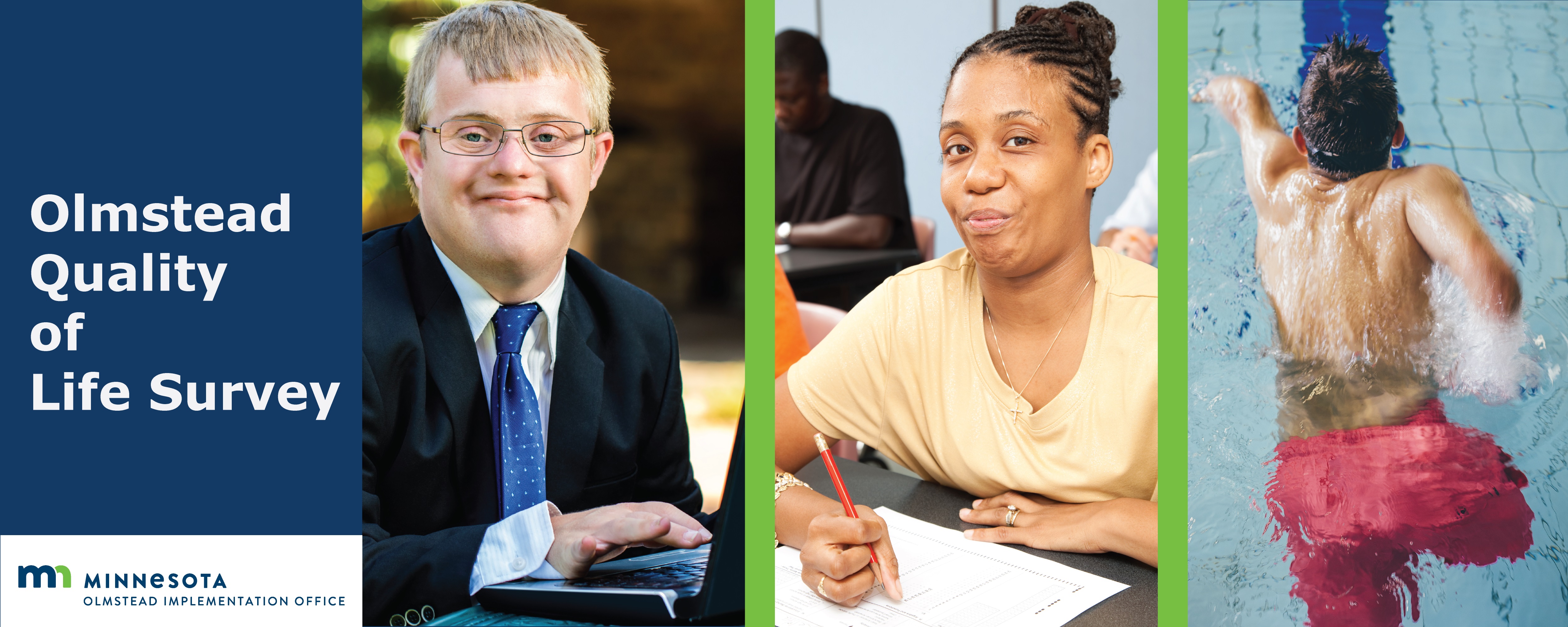
Can you think of how many times you get out of the house, engage with your community, and see friends? This is an important indicator of quality of life and one that has changed for all of us amid COVID-19. This is also one of the topics we ask Minnesotans with disabilities about for the State of Minnesota’s Olmstead Quality of Life Survey. The survey measures progress toward the state’s Olmstead Plan goal of ensuring people with disabilities are living, learning, working, and enjoying life in the most integrated setting. The survey engages Minnesotans with disabilities who receive services in any of the potentially segregated settings defined in the Olmstead Plan.
We have been the state’s partner in this survey since 2014; it’s longitudinal, which means we check back in with the same group of Minnesotans periodically to measure any changes in their quality of life since 2017, the first year we administered the survey. In the past, due to multiple factors, the Olmstead Quality of Life Survey has not engaged enough Minnesotans with disabilities who identify as Black, Indigenous, and People of Color to be able to answer important questions about racial equity and existing racial disparities. To fill this gap, this year’s survey includes a new sample of Minnesotans who identify as BIPOC, have a disability, and meet the selection criteria from the baseline survey. We are also making changes so survey implementation is safe amid COVID, and to capture the effects of COVID.
This year, to raise awareness of the survey before findings come out next year, we are working with the Olmstead Advisory Group to write project “briefs.” The focus of the first one, available now, is social integration and engagement—and asks questions about activities in everyone’s daily life, such as how many hours they work, how much time they spend volunteering, how often they visit with friends and family, and how often they participate in community events. Decision-makers in the state can use these project briefs and survey findings to inform legislation, address gaps in services and systems for Minnesotans with disabilities.
Check out the brief here, and follow along for future briefs and, next year, survey results!
